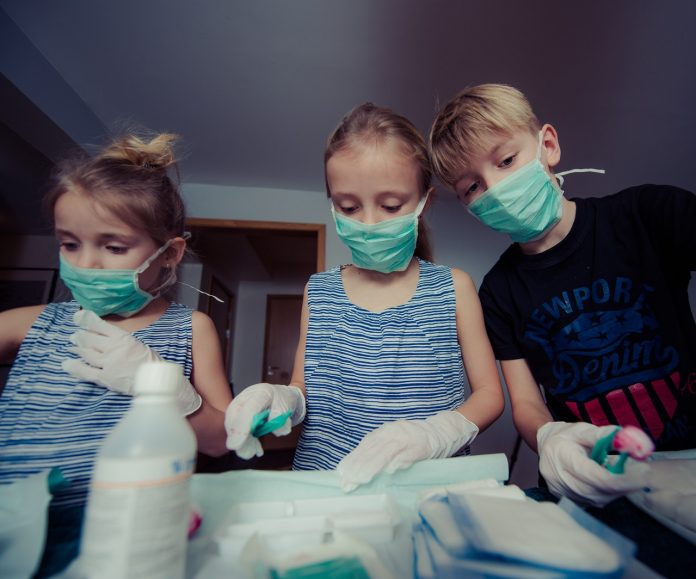Whether or not you have had CPR training, first-aid techniques should be common knowledge. Accidents can happen when you least expect it, and the nearest hospital may be some distance away. In this situation, first-aid must be performed to ensure that the patient’s condition doesn’t worsen any further.
Of course, knowing first-aid techniques is different from knowing how to perform them properly. People, who have had proper CPR training, can execute them correctly, but those who have none tend to commit common mistakes that could potentially injure the patient more.
Below are first-aid techniques that are usually performed incorrectly, along with the right way on how to do them properly.
Tilting Your Head Back During a Nosebleed
If blood is flowing out of a person’s nose, that person will most likely be advised to tilt his head a bit back to slow the blood flow down, until the bleeding comes to a halt.
To be fair, the bleeding does stop eventually, but thanks to the laws of gravity, there is also a chance that the blood may flow down the person’s throat. When this happens, the person might swallow blood, and this may cause vomiting.
The proper way to stop a nosebleed is to keep the head upright—and, as you would to any other bleeding part of the body, apply constant pressure to inhibit the blood flow and prevent excessive loss of blood.
Cleaning a Wound with Alcohol
Whether it’s a cut from the kitchen knife or a knee scrape from tripping over, alcohol has got your back.
Alcohol is clean, that much is true, but it doesn’t exactly bode well on wounds.
The logic here is understandable; alcohol is clean, and you want your wounds to be clean as much as possible to avoid infections. However, while alcohol does a good job of disinfecting, it also burns healthy cells—not to mention that it hurts pretty nasty, too.
The best way to deal with the wound would be washing it with clean or boiled water, then apply an antibiotic ointment—and unless absolutely necessary, wrap a bandage over it. A wound should be exposed to air as much as possible to speed up the healing process.
Applying Ice to a Bruise
If you have a bruise, grab some ice and apply it with pressure.
Applying ice is simple and has been proven to aid in the healing of bruises, but even this should be done carefully. While it is an effective way to reduce the swelling, it could also cause skin and nerve damage if done incorrectly.
The ice should be wrapped in a thin towel before being applied to the bruise for 10 to 20 minutes, at least 3 times a day for the first 72 hours. In addition, always try to keep the bruised area above the level of your heart to minimize the swelling.
Using a Tourniquet Incorrectly
Tourniquets are capable of controlling bleeding, but when blood is spurting out of your forearm, it’s not a good idea to tie one around your arm and keep it on until it stops.
By doing this, you’re stopping the blood flow to everything below the tourniquet, which can lead to necrosis, before potentially progressing to amputation—which you definitely shouldn’t aim for.
The right thing to do would be to apply a gauze or a clean cloth over the wound, and then apply pressure over it. Doing this should be enough until the ambulance arrives.
Always Using the Heimlich Maneuver
Continuously doing the Heimlich maneuver on a choking person until he regurgitates whatever it is that was choking him seems to be the way to go, but it isn’t.
The right way to do this would be to slap the choker between the shoulder blades with the heel of your palm five times, before doing five Heimlich thrusts just above the belly button—then repeat until the food comes out.
Alternating Chest Compressions with Mouth-to-mouth
Unless you’re in an action movie or you have had no CPR training, you have probably thought of this as the most effective way to perform CPR.
Researches have shown that the patient’s condition could worsen the more time you aren’t doing chest compressions, so in the event that you can’t find a pulse on a victim, scratch mouth-to-mouth altogether and focus on chest compressions. You will be giving the patient a better chance of surviving by doing so.
Key Takeaway
First-aid techniques were developed for situations when an ambulance isn’t immediately available. They can do as much as bring back an unconscious person, but they can worsen the patient’s condition as well if not done correctly.
A minor injury could lead to something more dangerous if first-aid is not administered the way they should be. Knowing how to execute first-aid techniques correctly is every bit as important as knowing what to do in any given emergency situation.


